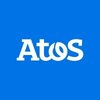
i
IBM
Proud winner of ABECA 2025 - AmbitionBox Employee Choice Awards
Filter interviews by
IBM Senior System Analyst Interview Questions and Answers
12 Interview questions
Worked on various AWS resources including EC2, S3, RDS, Lambda, and CloudFormation.
EC2 - Elastic Compute Cloud for scalable computing capacity
S3 - Simple Storage Service for object storage
RDS - Relational Database Service for managed databases
Lambda - Serverless computing service for running code without provisioning servers
CloudFormation - Infrastructure as Code service for automating resource provisioning
Multi-threading is the ability of a CPU to execute multiple threads concurrently, allowing for better performance and responsiveness.
Allows multiple tasks to run concurrently on a single CPU
Improves performance by utilizing idle CPU time
Can lead to synchronization issues and race conditions
Examples: web servers handling multiple requests simultaneously, video games rendering graphics while processing user input
CoreData is a framework provided by Apple for managing the model layer of an application.
CoreData is used to manage the model layer objects in an iOS application.
It provides an object graph management and persistence framework.
CoreData can be used to store data locally on the device.
It supports relationships between entities and data validation.
Example: Storing user information like name, email, and address in a C...
Angular is a complete framework while React is a library for building UI components.
Angular has a steeper learning curve and requires more setup time.
React is more flexible and can be easily integrated into existing projects.
Angular uses two-way data binding while React uses one-way data flow.
Angular has a larger file size while React is lightweight.
Angular has a built-in dependency injection system while React do...
What people are saying about IBM






The @Qualifier annotation is used in Spring to resolve ambiguity when multiple beans of the same type are present.
It is used to specify which bean should be autowired when multiple beans of the same type are present
It can be used with constructor injection, setter injection, and field injection
It is commonly used in conjunction with @Autowired annotation
Example: @Qualifier("myBean")
jdbctemplate is a class in Spring Framework that simplifies the use of JDBC while handling exceptions and boilerplate code.
It is used to perform database operations such as querying, updating, and deleting data.
It provides methods for executing SQL statements and mapping results to Java objects.
It handles exceptions and releases resources automatically.
Example: jdbcTemplate.queryForObject("SELECT COUNT(*) FROM use...
Creating an immutable class involves making the class and its fields final and not providing any setters.
Make the class final so it cannot be extended
Make all fields final so they cannot be changed
Do not provide any setters, only getters
If mutable objects are used in the class, return copies of them in getters
Spring Boot is a framework that simplifies the configuration and deployment of Spring-based applications.
Spring Boot provides a pre-configured environment for building and running Spring applications.
It eliminates the need for XML configuration files and reduces boilerplate code.
It includes an embedded web server and supports various data sources and messaging systems.
Example: Spring Boot can be used to quickly cr...
Hashmap is a data structure that stores key-value pairs and uses hashing to retrieve values quickly.
Hashmap uses an array to store the key-value pairs
The key is hashed to generate an index in the array
If two keys hash to the same index, a linked list is used to store the values
Hashmap provides constant time complexity for insertion, deletion, and retrieval
Java's Hashmap implementation uses a load factor to determi...
Marker interfaces are interfaces with no methods, used to mark a class as having a certain property or behavior.
Marker interfaces are used to provide metadata about a class.
They are used to indicate that a class implements a certain behavior or has a certain property.
Examples include Serializable, Cloneable, and Remote interfaces in Java.
Marker interfaces can also be used to trigger specific behavior in frameworks...
IBM Senior System Analyst Interview Experiences
12 interviews found
(2 Questions)
- Q1. Java Related Questions
- Q2. Scenario based questions
(1 Question)
- Q1. Microservices, Java 8
(2 Questions)
- Q1. Manager round with some technical questions
- Q2. Kafka consumer group use cases.
(1 Question)
- Q1. Dataflow pipeline gcp sample code

Mostly the question were like, what would you do as a tech lead in such scenarios.
(2 Questions)
- Q1. Managerial discussion
- Q2. Discussion on my role and responsibilities
Interview Preparation Tips
2) Tech stacks of project.
3) What would be your role and responsibilities in project.
I applied via Approached by Company and was interviewed in Apr 2022. There were 2 interview rounds.
(4 Questions)
- Q1. Design pattern in c#
- Ans.
Design patterns are reusable solutions to common software problems.
Design patterns help in creating flexible, reusable, and maintainable code.
Some common design patterns in C# are Singleton, Factory, Observer, and Decorator.
Singleton pattern ensures that only one instance of a class is created.
Factory pattern provides an interface for creating objects in a superclass, but allows subclasses to alter the type of objects ...
- Q2. React basic questions
- Q3. . Net core difference,DI in. Net core
- Ans.
.NET Core is a cross-platform framework while DI is a built-in dependency injection system in .NET Core.
DI in .NET Core is a built-in dependency injection system that allows for loosely coupled code.
.NET Core is a cross-platform framework that can run on Windows, Linux, and macOS.
DI in .NET Core can be configured using various methods such as constructor injection, property injection, and method injection.
In .NET Core,...
- Q4. Difference between angular and react
- Ans.
Angular is a complete framework while React is a library for building UI components.
Angular has a steeper learning curve and requires more setup time.
React is more flexible and can be easily integrated into existing projects.
Angular uses two-way data binding while React uses one-way data flow.
Angular has a larger file size while React is lightweight.
Angular has a built-in dependency injection system while React does no...
(2 Questions)
- Q1. What are you looking for in our company
- Q2. Salary expectations previous ctc expected
Interview Preparation Tips
Skills evaluated in this interview
I applied via Naukri.com and was interviewed before Apr 2023. There were 3 interview rounds.
1 hour of multiple choice questions
(1 Question)
- Q1. Java basics questions, microservise and AWS
(1 Question)
- Q1. Basic general questions and salary negotiation
I applied via Approached by Company and was interviewed before Mar 2023. There was 1 interview round.
(2 Questions)
- Q1. Java 8 streams intermediate and terminal methods
- Q2. AWS resources worked on
- Ans.
Worked on various AWS resources including EC2, S3, RDS, Lambda, and CloudFormation.
EC2 - Elastic Compute Cloud for scalable computing capacity
S3 - Simple Storage Service for object storage
RDS - Relational Database Service for managed databases
Lambda - Serverless computing service for running code without provisioning servers
CloudFormation - Infrastructure as Code service for automating resource provisioning
I applied via Referral and was interviewed before Jul 2022. There were 3 interview rounds.

Puzzles related to game & aptitude .
(3 Questions)
- Q1. Half an hour detailed technical interview has been done & it was moderate not so tough.
- Q2. What is multi-threading ?
- Ans.
Multi-threading is the ability of a CPU to execute multiple threads concurrently, allowing for better performance and responsiveness.
Allows multiple tasks to run concurrently on a single CPU
Improves performance by utilizing idle CPU time
Can lead to synchronization issues and race conditions
Examples: web servers handling multiple requests simultaneously, video games rendering graphics while processing user input
- Q3. What is CoreData ? Describe with proper example ?
- Ans.
CoreData is a framework provided by Apple for managing the model layer of an application.
CoreData is used to manage the model layer objects in an iOS application.
It provides an object graph management and persistence framework.
CoreData can be used to store data locally on the device.
It supports relationships between entities and data validation.
Example: Storing user information like name, email, and address in a CoreDa...
Skills evaluated in this interview
I applied via Naukri.com and was interviewed in Jan 2022. There were 2 interview rounds.
(1 Question)
- Q1. Scenario based questions.
(1 Question)
- Q1. BRD related questions
Interview Preparation Tips
- JCL
- Cobol
- Cics
- Db2
I applied via Company Website and was interviewed in Aug 2021. There were 3 interview rounds.
Interview Questionnaire
6 Questions
- Q1. Hashmap internal working .
- Ans.
Hashmap is a data structure that stores key-value pairs and uses hashing to retrieve values quickly.
Hashmap uses an array to store the key-value pairs
The key is hashed to generate an index in the array
If two keys hash to the same index, a linked list is used to store the values
Hashmap provides constant time complexity for insertion, deletion, and retrieval
Java's Hashmap implementation uses a load factor to determine wh...
- Q2. What is jdbctemplate ?
- Ans.
jdbctemplate is a class in Spring Framework that simplifies the use of JDBC while handling exceptions and boilerplate code.
It is used to perform database operations such as querying, updating, and deleting data.
It provides methods for executing SQL statements and mapping results to Java objects.
It handles exceptions and releases resources automatically.
Example: jdbcTemplate.queryForObject("SELECT COUNT(*) FROM users", ...
- Q3. How to create your own immutable class?
- Q4. What are marker interfaces?
- Ans.
Marker interfaces are interfaces with no methods, used to mark a class as having a certain property or behavior.
Marker interfaces are used to provide metadata about a class.
They are used to indicate that a class implements a certain behavior or has a certain property.
Examples include Serializable, Cloneable, and Remote interfaces in Java.
Marker interfaces can also be used to trigger specific behavior in frameworks or l...
- Q5. How spring boot is difference from spring?
- Q6. What is @qualifier annotation ?
Interview Preparation Tips
Skills evaluated in this interview
IBM Interview FAQs
Tell us how to improve this page.
IBM Interviews By Designations
- IBM Application Developer Interview Questions
- IBM Software Developer Interview Questions
- IBM Associate Systems Engineer Interview Questions
- IBM Software Engineer Interview Questions
- IBM Advisory System Analyst Interview Questions
- IBM Data Engineer Interview Questions
- IBM Senior Systems Engineer Interview Questions
- IBM Senior Software Engineer Interview Questions
- Show more
Interview Questions for Popular Designations
- Software Engineer Interview Questions
- Senior Software Engineer Interview Questions
- Senior Engineer Interview Questions
- System Engineer Interview Questions
- Senior Associate Interview Questions
- Team Lead Interview Questions
- Senior Consultant Interview Questions
- Senior Software Developer Interview Questions
- Show more
Overall Interview Experience Rating
based on 9 interview experiences
Difficulty level
Duration
Senior System Analyst Interview Questions from Similar Companies
IBM Senior System Analyst Reviews and Ratings
based on 226 reviews
Rating in categories
|
Application Developer
12.6k
salaries
| ₹5.3 L/yr - ₹26.8 L/yr |
|
Software Developer
5.9k
salaries
| ₹13.7 L/yr - ₹35.1 L/yr |
|
Software Engineer
5.9k
salaries
| ₹8.4 L/yr - ₹25.3 L/yr |
|
Senior Software Engineer
5.4k
salaries
| ₹12.9 L/yr - ₹30 L/yr |
|
Advisory System Analyst
4.5k
salaries
| ₹13.6 L/yr - ₹23 L/yr |

Oracle

TCS

Cognizant

Accenture
- Home >
- Interviews >
- IBM Interview Questions














